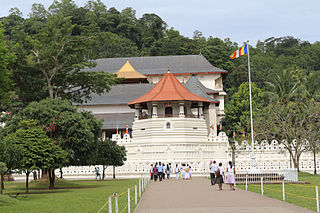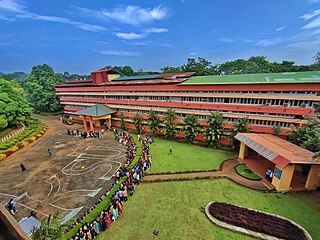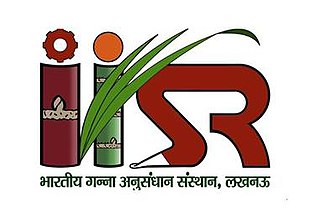
Kandy is a major city in Sri Lanka located in the Central Province. It was the last capital of the ancient kings' era of Sri Lanka. The city is situated in the midst of hills in the Kandy plateau, which crosses an area of tropical plantations, mainly tea. Kandy is both an administrative and religious city and is also the capital of the Central Province. Kandy is the home of the Temple of the Tooth Relic, one of the most sacred places of worship in the Buddhist world. It was declared a World Heritage Site by UNESCO in 1988. Historically the local Buddhist rulers resisted Portuguese, Dutch, and British colonial expansion and occupation.

Tourism in Sri Lanka is growing rapidly. For centuries, Sri Lanka has been a popular place of attraction for foreign travelers. The Chinese traveler Fa-Hien visited Sri Lanka as early as the 410's AD/CE, and in the twelfth century, Italian explorer Marco Polo claimed Sri Lanka to be the "best island of its size in the world".

Sri Lanka Institute of Information Technology is a private university located in Malabe and Colombo, Sri Lanka. It specialises in various fields like technology and management.
The University of Colombo is a public research university located primarily in Colombo, Sri Lanka. It is the oldest institution of modern higher education in Sri Lanka. Specialised in the fields of natural, social, and applied sciences as well as mathematics, computer sciences, and law. It is ranked among the top 10 universities in South Asia.

The Sri Lankan elephant is native to Sri Lanka and one of three recognised subspecies of the Asian elephant. It is the type subspecies of the Asian elephant and was first described by Carl Linnaeus under the binomial Elephas maximus in 1758. The Sri Lankan elephant population is now largely restricted to the dry zone in the north, east and southeast of Sri Lanka. Elephants are present in Udawalawe National Park, Yala National Park, Lunugamvehera National Park, Wilpattu National Park and Minneriya National Park but also live outside protected areas. It is estimated that Sri Lanka has the highest density of elephants in Asia. Human-elephant conflict is increasing due to conversion of elephant habitat to settlements and permanent cultivation.

The Eastern University Sri Lanka is a public university in Vantharumoolai, Eastern Province, Sri Lanka. It was established on 1 October 1986. The university was preceded by the Batticaloa University College established on 1 August 1981 which was started in the buildings of the Vantharumoolai Madya Maha Vidyalayam.

The University of Peradeniya is a public university in Sri Lanka, funded by the University Grants Commission. It is the largest university in Sri Lanka, which was originally established as the University of Ceylon in 1942. The university was officially opened on 20 April 1954, in the presence of Queen Elizabeth II, by Prince Philip, Duke of Edinburgh.

University Grants Commission is the body responsible for funding most of the State Universities in Sri Lanka, and operates within the frame work of the Universities Act No. 16 of 1978. A public organisation, established under the Parliament Act No 16 of 1978. Location is at No 20, Ward Place Colombo 07.

The College of Agriculture Vellanikkara, is the main campus and the premier college of Kerala Agricultural University, situated in Thrissur of Kerala state in India. The College of Agriculture imparts agricultural education at undergraduate, graduate and doctoral levels. The college has 22 departments, 11 All India Coordinated Research Projects and 11 centres undertaking the multiple activities of teaching, research and extension. The college is located in the picturesque of Kerala Agricultural University where the college and its departments itself spans the central campus in Vellanikkara, Thrissur. The college received Sardar Patel Outstanding Institution Award more than 10 times consecutively which is awarded by the Indian Council of Agricultural Research, for the institution's efficiency in contributing most number of Top ranks in JRF and SRF All India Entrance Examinations. The IPR cell under this college plays a pivotal role in establishing and promoting the Intellectual rights for products and services of the state and has secured the recognition of being the India's leading government institute for bagging most Geographical Indication tags. Agri Business Incubator functioning under the college is one of the prosperous and promising avenue for rising entrepreneurs of the state. The college was the first college to be awarded 'The Best College Award' by Kerala Agricultural University. College of Agriculture Vellanikkara is the only college under the university to win the intercollegiate Golden Lady Arts Trophy consecutively for about a decade. Dr. Mani Chellappan. Professor and Head, Department of Agricultural Entomology, CoA Vellanikkara, is the current Dean of the college

The primary form of agriculture in Sri Lanka is rice production. Rice is cultivated during Maha and Yala seasons. Tea is cultivated in the central highlands and is a major source of foreign exchange. Vegetables, fruits and oilseed crops are also cultivated in the country. There are two Agriculture Parks abbreviated as A. Parks established by the Department of Agriculture. Out of the total population in Sri Lanka, 27.1% engages in agricultural activities. Agriculture accounted for 7.4% of the GDP in 2020.
The University of Colombo currently has seven faculties with 41 academic departments and two interdependent schools with five academic departments. All faculties and schools carries out courses of study and research in both graduate and undergraduate studies. In addition, the university has several institutions that specialize in different areas of research.

The Ministry of Agriculture Jihad is an Iranian government body established in 2001 responsible for the oversight of Agriculture in Iran. The ministry has been called Jihad of Construction but it was merged with agriculture ministry in 2001 to form the Ministry of Agricultural Jihad.
Pahalawattage Don Premasiri is a Sri Lankan Buddhist scholar specializing in the areas of Buddhist ethics and Buddhist philosophy. Premasiri's academic training represents a synthesis of both the Buddhist and Western philosophical traditions, first at the University of Peradeniya and subsequently at Cambridge and Hawaii. He is currently president of the Buddhist Publication Society and professor emeritus in the Department of Pali and Buddhist Studies at the University of Peradeniya.

Hector Senarath Rajakaruna Bandara Kobbekaduwa was a Sri Lankan politician and lawyer. He was the Sri Lanka Freedom Party candidate in the 1982 Sri Lankan presidential election and the Minister for Agriculture and Lands from 1970 to 1977. He is remembered for nationalizing privately owned land and restricting the ownership of private land to 20 hectares for the purpose of giving land to landless peasants. He created collectively owned settlement programs called Janawasas in some of the land that was acquired. He contested the 1982 presidential election and lost. The campaign of the SLFP led by him advocated for restoring previous Sri Lanka Freedom Party policies. His opponents ran an effective campaign criticising the closed economy & socialist policies of his Sri Lanka Freedom Party – led regime from 1970 to 1977, they blamed the SLFP policies for creating scarcities of essential goods and unemployment. Although the SLFP led by him lost the 1982 Sri Lankan presidential election, he managed to gain a significant number of votes in Tamil speaking areas like Point Pedro defeating Tamil nationalist parties.

The Indian Institute of Horticultural Research (IIHR) is an autonomous organization acting as a nodal agency for basic, strategic, anticipatory and applied research on various aspects of horticulture such as fruits, vegetable, ornamental, medicinal and aromatic plants and mushrooms in India. The institute has its headquarters in Bengaluru, Karnataka, India and is a subsidiary of Indian Council of Agricultural Research (ICAR), New Delhi, under the Ministry of Agriculture, India. It recently has been ranked 1st for the combined years 2019-20 and 2020-21 by the ICAR.

The Central Institute of Agricultural Engineering (CIAE) is a higher seat of learning, research and development in the field of agricultural engineering, situated in the lake city of Bhopal, Madhya Pradesh, India. It is an autonomous body, an Indian Council of Agricultural Research subsidiary, under the Ministry of Agriculture & Farmer's Welfare, Government of India.

The Indian Institute of Sugarcane Research is an autonomous institute of higher learning, under the umbrella of Indian Council of Agricultural Research (ICAR) by the Ministry of Agriculture, Government of India for advanced research in sugar cane agriculture. The Institute is located on Raibareli Road, Dilkusha in Lucknow, Uttar Pradesh, India. While, The Central Sugarcane Research Institute established in 1912 is located in Coimbatore, Tamil Nadu, India. It works also under the Indian Council of Agricultural Research.
The Sri Lanka Institute of Nanotechnology is a Sri Lankan research institute specialising in the field of nanotechnology. It was incorporated in 2008 as a public-private partnership between the Government of Sri Lanka and five private companies, and is notable for being the first public-private research institute in the country.

Rubber production in Sri Lanka commenced in 1876, with the planting of 1,919 rubber seedlings at the Henarathgoda Botanical Gardens in Gampaha. The total extent under rubber in 1890 was around 50 ha and in the early 1900s it increased to around 10,000 ha. By 1982 the total extent under rubber was around 180,000 ha and the total annual production was 125,000,000 kg (276,000,000 lb). However, the total extent under rubber declined subsequently and at present it is around 120,000 h (430,000 ks)a. Rubber contributes about 0.6% of the total GDP. According to figures published in 2018 by the Rubber Research Institute of Sri Lanka, producing 82,600,000 kg (182,100,000 lb) in 2018.















